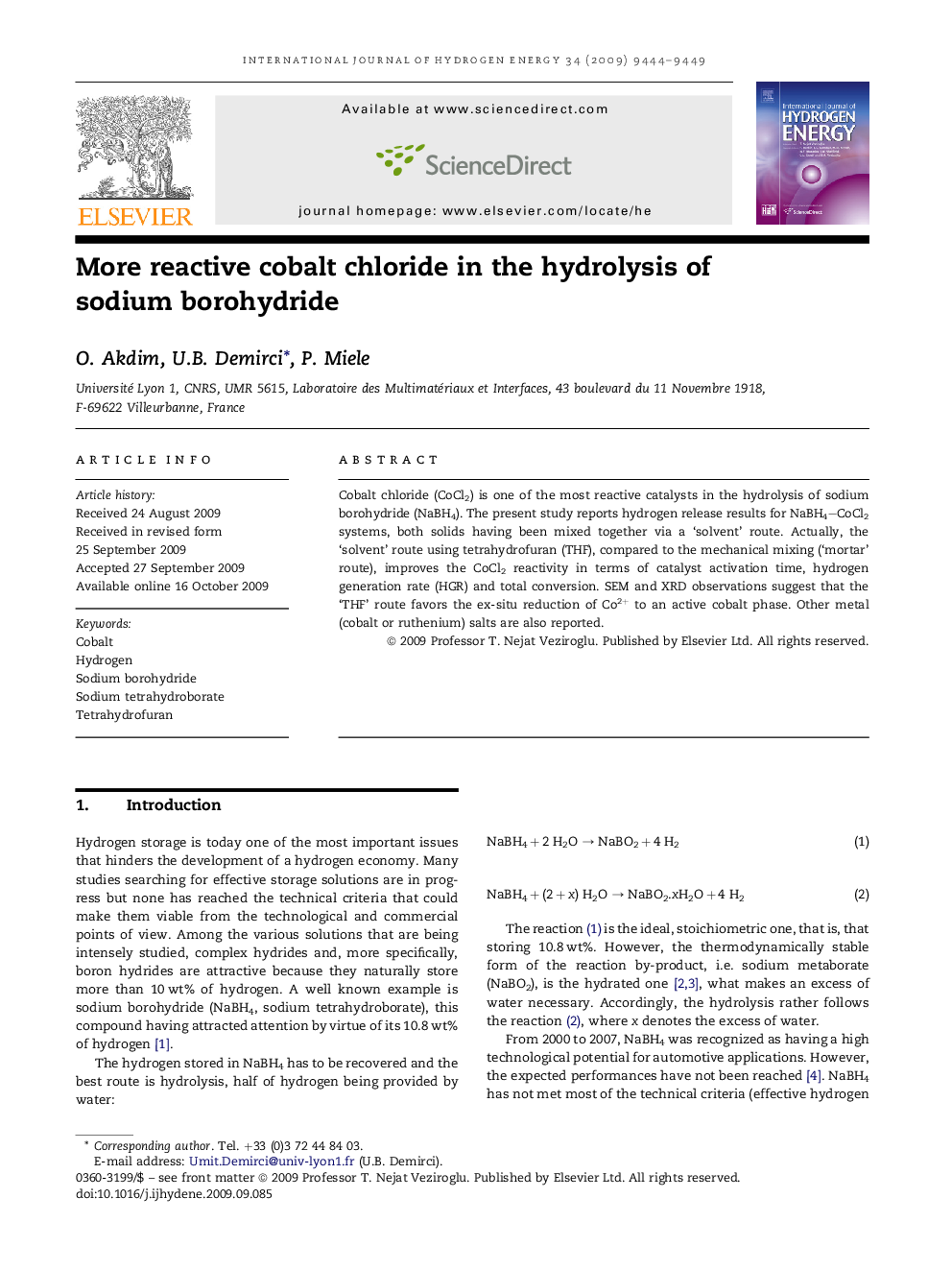| Article ID | Journal | Published Year | Pages | File Type |
|---|---|---|---|---|
| 1277238 | International Journal of Hydrogen Energy | 2009 | 6 Pages |
Abstract
Cobalt chloride (CoCl2) is one of the most reactive catalysts in the hydrolysis of sodium borohydride (NaBH4). The present study reports hydrogen release results for NaBH4CoCl2 systems, both solids having been mixed together via a ‘solvent’ route. Actually, the ‘solvent’ route using tetrahydrofuran (THF), compared to the mechanical mixing (‘mortar’ route), improves the CoCl2 reactivity in terms of catalyst activation time, hydrogen generation rate (HGR) and total conversion. SEM and XRD observations suggest that the ‘THF’ route favors the ex-situ reduction of Co2+ to an active cobalt phase. Other metal (cobalt or ruthenium) salts are also reported.
Related Topics
Physical Sciences and Engineering
Chemistry
Electrochemistry
Authors
O. Akdim, U.B. Demirci, P. Miele,
